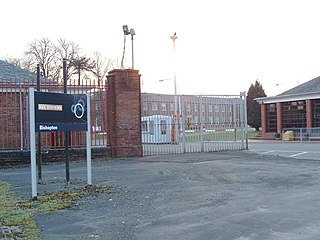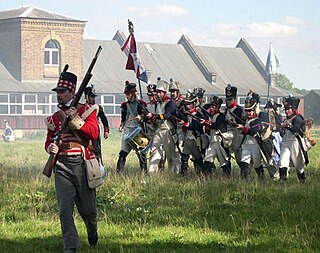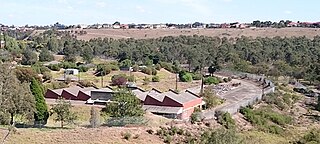
Nitroglycerin (NG), also known as trinitroglycerol (TNG), nitro, glyceryl trinitrate (GTN), or 1,2,3-trinitroxypropane, is a dense, colorless or pale yellow, oily, explosive liquid most commonly produced by nitrating glycerol with white fuming nitric acid under conditions appropriate to the formation of the nitric acid ester. Chemically, the substance is an organic nitrate compound rather than a nitro compound, but the traditional name is retained. Discovered in 1846 by Ascanio Sobrero, nitroglycerin has been used as an active ingredient in the manufacture of explosives, namely dynamite, and as such it is employed in the construction, demolition, and mining industries. It is combined with nitrocellulose to form double-based smokeless powder, used as a propellant in artillery and firearms since the 1880s.

Cordite is a family of smokeless propellants developed and produced in Britain since 1889 to replace black powder as a military firearm propellant. Like modern gunpowder, cordite is classified as a low explosive because of its slow burning rates and consequently low brisance. These produce a subsonic deflagration wave rather than the supersonic detonation wave produced by brisants, or high explosives. The hot gases produced by burning gunpowder or cordite generate sufficient pressure to propel a bullet or shell to its target, but not so quickly as to routinely destroy the barrel of the gun.

Smokeless powder is a type of propellant used in firearms and artillery that produces less smoke and less fouling when fired compared to black powder. Because of their similar use, both the original black powder formulation and the smokeless propellant which replaced it are commonly described as gunpowder. The combustion products of smokeless powder are mainly gaseous, compared to around 55% solid products for black powder. In addition, smokeless powder does not leave the thick, heavy fouling of hygroscopic material associated with black powder that causes rusting of the barrel.

Arne is a village and civil parish in Dorset, England, situated 4 miles (6.4 km) east of Wareham. The local travel links are located at Wareham railway station. Bournemouth International Airport is 11 miles (18 km) away. The main road through the village is Arne Road connecting Arne to Wareham. The village is situated on the Arne Peninsula, which protrudes into Poole Harbour opposite the town of Poole.
An explosive ROF was a UK government-owned Royal Ordnance Factory (ROF), which specialised in manufacturing explosives during and after World War II. In World War I, the name used in the UK for government-owned explosives factories was National Explosives Factory; the cordite factory at Gretna was known as HM Factory, Gretna.

Royal Ordnance Factories (ROFs) were munitions factories run by the UK government during and after the Second World War. The three main types of factories were engineering, filling and explosives, and these were dispersed across the country for security reasons. ROFs were the responsibility of the Ministry of Supply and later the Ministry of Defence until privatisation in 1987.
This article explains terms used for the British Armed Forces' ordnance (weapons) and ammunition. The terms may have different meanings depending on its usage in another country's military.

The Royal Ordnance Factory (ROF) Bishopton was a WW2 Ministry of Supply Explosive Factory. It is sited adjacent to the village of Bishopton in Renfrewshire, Scotland. The factory was built to manufacture the propellant cordite for the British Army and the Royal Air Force. It also later produced cordite for the Royal Navy. The Ministry of Works were responsible for the site. It was the biggest munitions factory the MOD had, with up to 20,000 workers.
The Royal Ordnance Factory ROF Ranskill was a United Kingdom Ministry of Supply, World War II, Explosive ROF. It was built to manufacture cordite and the site was located adjacent to what is now known as the East Coast Main Line railway at Ranskill, Nottinghamshire, just north of the town of Retford.

Caerwent Training Area is a British military installation at Caerwent, Monmouthshire, Wales. The large military site is situated north of the A48 road about 5 mi (8.0 km) west of Chepstow and 12 miles (19 km) east of Newport.

Holton Heath railway station serves the area of Holton Heath in Wareham St Martin, Dorset, England. It is 118 miles 61 chains (191.1 km) down the line from London Waterloo. It was opened to serve the Royal Navy Cordite Factory, Holton Heath during the First World War. It did not open to the public until 1924.

The Royal Gunpowder Mills are a former industrial site in Waltham Abbey, England. It was one of three Royal Gunpowder Mills in the United Kingdom. Waltham Abbey is the only site to have survived virtually intact.

A Royal Naval Armament Depot (RNAD) is an armament depot dedicated to supplying the Royal Navy. They were sister depots of Royal Naval Cordite Factories, Royal Naval Torpedo and Royal Naval Mine Depots. The only current RNAD is RNAD Coulport, which is the UK Strategic Weapon Facility for the nuclear-armed Trident Missile System, with many others being retained as tri-service 'Defence Munitions' sites.
Holton Heath is an area of the parish of Wareham St Martin, Dorset, England. The area includes a trading estate, on the site of the former Royal Navy Cordite Factory, Holton Heath, (RNCF). East of the trading estate is the Holton Heath National Nature Reserve, currently closed to the public.

The 5th Anti-Aircraft Division was an air defence formation of Britain's Territorial Army, created in the period of tension before the outbreak of the Second World War. It defended Southern England during the Battle of Britain and the Blitz.

The Naval Ordnance Department, also known as the Department of the Director of Naval Ordnance, was a former department of the Admiralty responsible for the procurement of naval ordnance of the Royal Navy. The department was managed by a Director, supported by various assistants and deputies; it existed from 1891 to 1958.

The Naval Ordnance Stores Department, was a former department of the Admiralty responsible for the management of naval ordnance storage facilities and depots of the Royal Navy the department was managed by a Superintendent of Stores supported by various deputy and assistant superintendents's it existed from 1891 to 1918 when it was replaced by the Armament Supply Department.

Defence Explosive Factory Maribyrnong is a heritage-listed military installation and former munitions factory at Cordite Avenue, Maribyrnong, Victoria, Australia. It was added to the Australian Commonwealth Heritage List on 22 June 2004.

The Admiralty Materials Laboratory, located at Holton Heath, was one of the United Kingdom's principal defence research and discovery establishments. In 1978 The Admiralty Materials Laboratory was combined with the Naval Construction Research Establishment to form the Admiralty Marine Technology Establishment.

The Stowmarket Guncotton Company was an explosives company established in the 19th century by Messrs Prentice that operated a gun-cotton factory in Stowmarket, Suffolk, England. The factory was the scene of an explosion in 1871 that claimed the lives of 28 people.

















